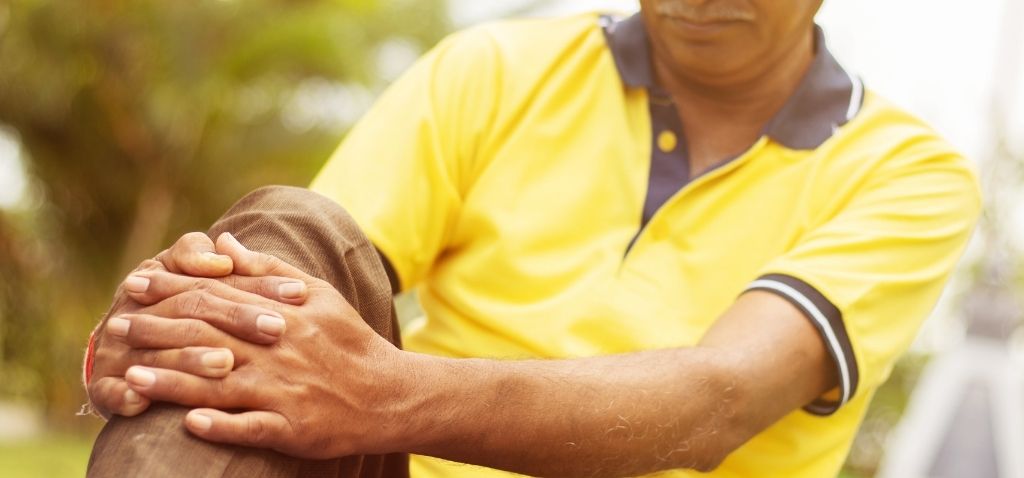Therapy After Surgery: Rehabilitation for Hip, Knee & Shoulder Injuries
Maybe your father slipped and fell while getting out of the shower. Maybe you tripped on an area rug and landed on your knee.
The older you get, the more likely you are to break a hip or leg after a fall. Often, these may require emergency surgery. Rehabilitation is started while you’re in the hospital—in some cases, mere hours after you’ve had surgery. You’ll likely be discharged in three to four days.
But then what?
Are you ready to live independently? Are your children or your spouse able to take care of you? Will you be able to shower? Cook?
Many times, a broken hip requires hip replacement surgery. As a result, you or your loved one may not be at the point where you can be discharged home. That’s when inpatient rehabilitation at our community is a great option.
What Happens During Rehabilitation?
You’ll work closely with one of our physical therapists to help you learn to walk again, maintain balance, and learn to use assistive devices to make your transition easier.
You’ll also have regular exercises to help restore your mobility. This will help you perform important everyday activities.
While everyone’s recovery is different, in general, orthopedic surgeons will suggest 20 to 30 minutes of exercise two to three times a day to help you recover.
That’s one reason why it’s often easier to secure a bed at an inpatient rehabilitation center.
The earlier postoperative exercises will primarily concentrate on increasing blood circulation. This is vital for preventing blood clots in your feet. These were probably started immediately after surgery.
Other exercises may involve:
- Ankle pumps
- Ankle rotations
- Bed-supported knee bends
- Buttock contractions
- Abduction exercises
If you’d like more information, in addition to complete illustrations on how to perform these exercises, you can find more information from the American Academy of Orthopaedic Surgeons.
However, we want to emphasize that your doctor may have already prescribed an exercise plan for you. Please speak to your doctor before doing any type of exercise or physical therapy after a broken leg or hip.
Different Types of Rehabilitation
Three main types of rehabilitation are available at our inpatient physical rehab facility in Greenville, NC.
Physical Therapy
This is perhaps what most people think about when they hear the word “rehabilitation.” Through exercises and balance training, physical therapists enable residents to walk again or teach them to walk using a cane or walker.
Occupational Therapy
Suppose your broken hip renders you unable to put on your shoes? Don’t worry; your occupational therapist is responsible for helping you find new ways of performing everyday tasks.
Speech Therapy
This is about much more than helping someone speak. Speech therapists can assist those who have swallowing problems as well as those with memory issues. Often memory and speech problems may be caused by medical conditions such as a stroke or neurological problems such as Parkinson’s disease.
Many Fractures are Due to Falls: Take a Look at the Data
Did you know that more than one out of 4 older people fall each year? To make matters worse, less than half of those tell their doctors, which means they are not getting the care they need to ensure a healthy recovery.
If you have fallen once, you are twice as likely to fall again, according to information from the Centers for Disease Control.
That’s why once you’ve had one fall, it’s helpful to research and know the best local rehabilitation facilities in the area. Being able to choose where you want to go in the event of an emergency is easier when you are not in the midst of being discharged.
In addition:
- Every year 300,000 older people are hospitalized for hip fractures.
- More than 95 percent of these fractures are caused by falling.
- Falls are the most common reason for traumatic brain injuries
- Total of medical costs for falls is an estimated $50 billion
So what do these statistics mean to you?
Stay safe. Eliminate any tripping hazards. Make sure you or your loved one has a home that is free of any potential problems. If you or someone you love is at a greater risk of falls, you may want to consider an assisted living facility near you.
Assisted living offers the convenience of having someone help you with mundane, everyday tasks while, at the same time, allowing you to live as independently as safely possible.
If, for some reason, you or your loved one need more intensive care, or if you’re recovering from a hip or knee replacement, we offer skilled nursing care in Greenville, NC.
East Carolina Rehabilitation and Wellness Offers Rehabilitation Near You in Greenville, NC
Greenville, NC has extensive recreational opportunities, and is home to East Carolina University, one of the leading colleges in North Carolina. Through East Carolina University, you can have access to concerts, sporting events and other special programs.
Through our dedicated and friendly staff, we provide rehabilitation and skilled nursing care for those who may be recovering from a broken leg or hip. We’re very experienced in helping those with a hip replacement regain their ability to walk and perform everyday activities.
Contact us today for information and to schedule a virtual tour.
See why our residents love living at East Carolina Rehabilitation and Wellness.


